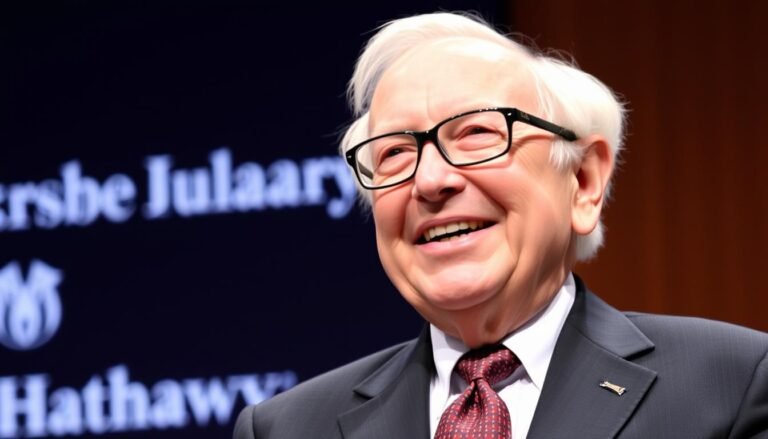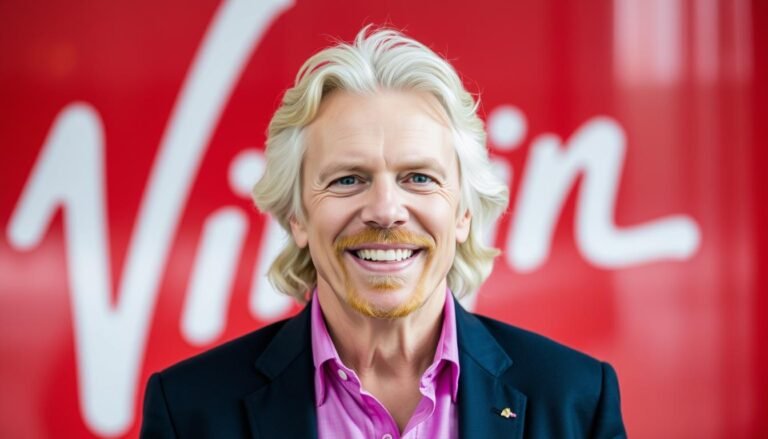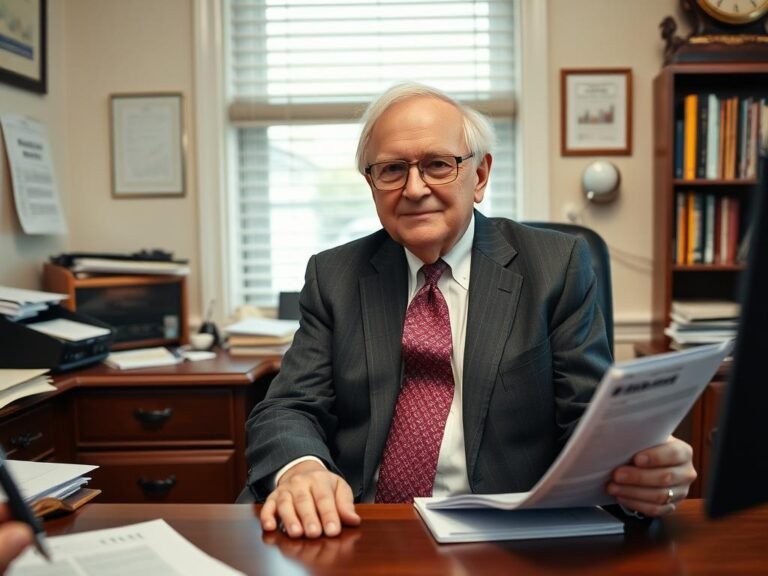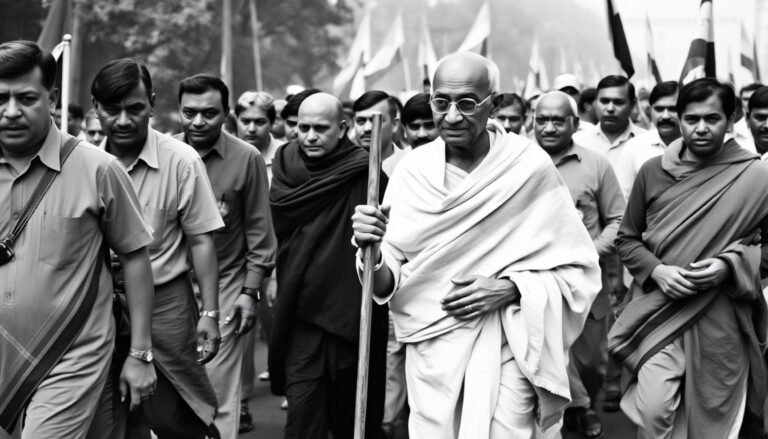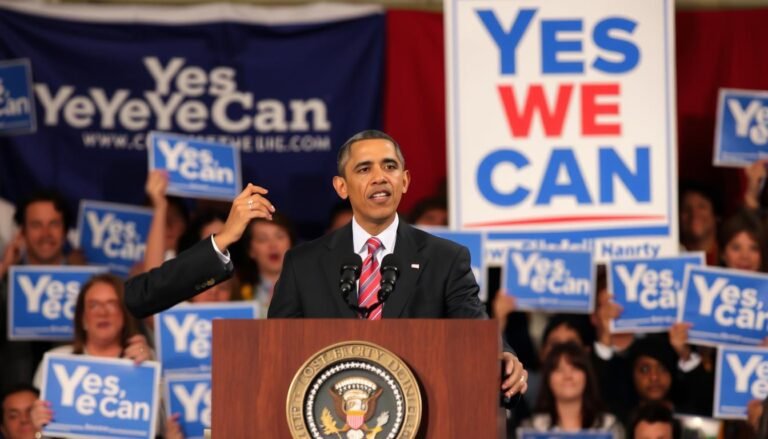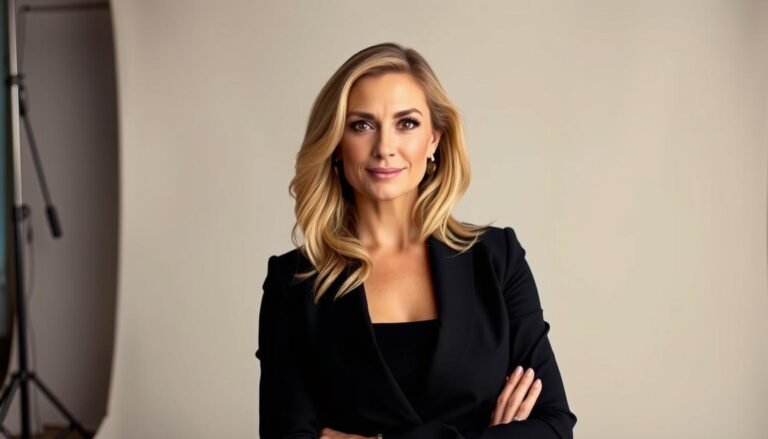Jeff Bezos – From Books to Billions
On July 5, 1994, a former Wall Street computer engineer named Jeff Bezos incorporated a company called Cadabra, Inc. Working from his garage in Bellevue, Washington with his then-wife MacKenzie and a handful of employees, Bezos was betting everything on a revolutionary idea: selling books online. Within a year, the company—renamed Amazon—sold its first book. What followed was one of the most extraordinary entrepreneurial journeys in history, transforming not just retail but multiple industries while making Bezos one of the wealthiest individuals on the planet. This is the story of how a risk-taking entrepreneur with a clear vision and unwavering customer focus built an empire that forever changed how we shop, read, compute, and think about business.
Early Life and Education: The Making of an Entrepreneur
Born Jeffrey Preston Jorgensen on January 12, 1964, in Albuquerque, New Mexico, Bezos showed signs of mechanical aptitude and scientific interest from an early age. When his mother Jacklyn remarried Miguel “Mike” Bezos, the young Jeff took his stepfather’s surname. His grandfather, Lawrence Preston Gise, a regional director of the U.S. Atomic Energy Commission, played a significant role in nurturing Bezos’s scientific curiosity during summers spent at his ranch in Texas.
As a high school student in Miami, Florida, Bezos demonstrated exceptional academic abilities, graduating as valedictorian of his class. His graduation speech revealed early dreams that would later define his career: he spoke of his vision for humanity to colonize space and “get all people off the earth and see it turned into a huge national park.” This space fascination would later materialize in his Blue Origin venture.
Early Insight: Even as a teenager, Bezos demonstrated the forward-thinking vision that would later characterize his business approach. His ability to imagine seemingly impossible futures—like space colonization—shows how early he developed the expansive thinking that would later revolutionize retail.
At Princeton University, Bezos initially pursued physics but later switched to electrical engineering and computer science. He graduated summa cum laude in 1986 with a Bachelor of Science in Engineering and a remarkable 4.2 GPA. During his time at Princeton, Bezos served as president of the Students for the Exploration and Development of Space chapter, foreshadowing his later interest in space ventures.
Early Career: Wall Street Years

After graduating from Princeton, Bezos turned down offers from Intel, Bell Labs, and Andersen Consulting to join Fitel, a fintech telecommunications startup. His early career trajectory showed a pattern of seeking challenging opportunities where he could make significant contributions. At Fitel, he was tasked with building a network for international trade and quickly rose to become head of development and director of customer service.
Bezos’s career accelerated when he joined D.E. Shaw & Co., a technically sophisticated hedge fund, in 1990. By age 30, he had become the firm’s fourth senior vice president. It was during his time at D.E. Shaw that Bezos began to recognize the transformative potential of the internet. When he discovered that web usage was growing at an astonishing rate of 2,300% annually, the seeds of Amazon were planted.
“When I’m 80, am I going to regret leaving Wall Street? No. Will I regret missing the beginning of the Internet? Yes.”
This “regret minimization framework,” as Bezos called it, became a cornerstone of his decision-making process. It pushed him to take calculated risks when the potential rewards aligned with his long-term vision. This framework would later influence many of Amazon’s boldest moves, from expanding beyond books to launching Amazon Web Services.
The Birth of Amazon: From Garage to Global Giant

In 1994, at age 30, Bezos made the life-changing decision to leave his lucrative position at D.E. Shaw to pursue his vision of an online bookstore. With his wife MacKenzie playing an integral role in the company’s early operations, Bezos drove cross-country from New York to Seattle, drafting Amazon’s business plan along the way. He chose Seattle strategically for its large pool of technical talent and proximity to Ingram Book Group, a major book wholesaler.
Initially named “Cadabra,” Bezos quickly changed the company name to “Amazon” after his lawyer misheard the original name as “cadaver.” The name Amazon was chosen for two strategic reasons: it began with the letter “A,” which would place it near the top of alphabetical listings, and it referenced the world’s largest river, reflecting Bezos’s ambition to create the world’s largest bookstore.
Initial Challenges
The early days of Amazon were defined by scrappy resourcefulness. Bezos and his small team worked from his garage, with desks made from doors purchased from Home Depot and supported by four-by-fours. The startup operated with minimal resources, and Bezos warned early investors there was a 70% chance Amazon would fail or go bankrupt.
Despite these challenges, Bezos secured approximately $1 million in seed funding from friends, family, and angel investors. His parents contributed about $300,000, a significant portion of their life savings—a testament to their belief in their son’s vision.
Early Growth Strategy
From the beginning, Bezos focused on customer experience above all else. Amazon’s website was designed to be user-friendly, offering features that were revolutionary at the time: customer reviews, personalized recommendations, and a vast selection that physical bookstores couldn’t match.
Bezos adopted the mantra “Get Big Fast,” recognizing that scale was crucial to Amazon’s success. This philosophy drove aggressive expansion, with Bezos consistently reinvesting profits back into the company rather than distributing them as dividends—a practice that would continue for decades.
Entrepreneurial Lesson: The Power of Customer Obsession
Bezos’s relentless focus on customer experience became Amazon’s competitive advantage. Even today, he maintains the email address jeff@amazon.com for customers to reach out with concerns. While he doesn’t personally respond to all emails, he forwards some with a question mark to executives who must address the issues. How could you apply this level of customer focus to your business?
Amazon’s Expansion: Beyond Books to Everything Store
Amazon’s journey from online bookstore to “everything store” represents one of the most successful business expansions in history. In 1998, just three years after selling its first book, Amazon began diversifying its product offerings, adding music and videos to its catalog. By 1999, Bezos had expanded into consumer goods, electronics, toys, and more.
This expansion wasn’t without risks. During the dot-com bubble of the late 1990s, Amazon made several investments that initially appeared questionable, including stakes in Pets.com and Kozmo.com, both of which failed after the bubble burst. By 2000, Amazon’s cash reserves had dwindled to $350 million, and the company had borrowed $2 billion from banks to stay afloat.
“If you’re not stubborn, you’ll give up on experiments too soon. And if you’re not flexible, you’ll pound your head against the wall and you won’t see a different solution to a problem you’re trying to solve.”
Key Milestones in Amazon’s Diversification
| Year | Milestone | Strategic Significance |
| 1995 | First book sold online | Proved the e-commerce concept for books |
| 1997 | Initial Public Offering (IPO) | Raised $54 million for aggressive expansion |
| 1998 | Expanded to CDs and videos | First step beyond books into media |
| 2002 | Amazon Web Services (AWS) launched | Entered cloud computing, later becoming Amazon’s most profitable division |
| 2005 | Amazon Prime introduced | Created subscription model for faster shipping, building customer loyalty |
| 2007 | Kindle e-reader released | Revolutionized book industry with digital reading |
| 2009 | Acquired Zappos for $1.2 billion | Expanded footprint in apparel and footwear |
| 2014 | Amazon Echo and Alexa launched | Entered smart home market with voice technology |
| 2017 | Acquired Whole Foods for $13.7 billion | Major move into physical retail and grocery |
The AWS Revolution

Perhaps the most transformative expansion came in 2006 with the launch of Amazon Web Services (AWS). What began as an internal solution to Amazon’s own computing needs evolved into the world’s largest cloud computing service. By 2020, AWS was generating over half of Amazon’s operating income, despite representing a smaller portion of total revenue.
The success of AWS exemplifies Bezos’s willingness to experiment in seemingly unrelated fields. Rather than limiting Amazon to retail, Bezos recognized the company’s technical infrastructure as a valuable asset that could be monetized. This lateral thinking—seeing opportunities beyond the obvious—has been a hallmark of Bezos’s approach to business growth.
Business Insight: Identifying Hidden Assets
AWS emerged from Amazon’s need to solve its own technical challenges. By recognizing that the solutions they built for themselves could be valuable to others, Amazon created an entirely new revenue stream. Consider what internal systems, processes, or knowledge your business has developed that might be valuable to others in your industry.
Bezos’s Leadership Philosophy: The Amazon Way

Central to Amazon’s success is Bezos’s distinctive leadership philosophy, which has shaped the company’s culture and operations. His approach combines long-term thinking, customer obsession, and a willingness to be misunderstood for long periods while pursuing unconventional strategies.
The Day 1 Mentality
One of Bezos’s most famous concepts is his “Day 1” philosophy. In his annual shareholder letters, Bezos frequently reminded stakeholders that at Amazon, “it’s always Day 1.” This mindset emphasizes maintaining the agility, customer focus, and bold decision-making of a startup, even as the company grew into a global giant.
“Day 2 is stasis. Followed by irrelevance. Followed by excruciating, painful decline. Followed by death. And that is why it is always Day 1.”
This philosophy manifests in Amazon’s continued willingness to experiment, take risks, and even cannibalize its own successful products if it means better serving customers in the long run. The Kindle, for instance, disrupted Amazon’s own profitable physical book business, but Bezos recognized that digital reading was the future and preferred to lead the disruption rather than fall victim to it.
Leadership Principles
Amazon operates according to a set of 14 leadership principles that guide decision-making throughout the organization. These principles, which include “Customer Obsession,” “Invent and Simplify,” “Bias for Action,” and “Have Backbone; Disagree and Commit,” reflect Bezos’s values and expectations for how Amazon employees should approach their work.
Customer Obsession
Perhaps the most fundamental of Amazon’s principles is customer obsession. Bezos has consistently prioritized long-term customer satisfaction over short-term profits. This focus has sometimes frustrated Wall Street analysts but has built extraordinary customer loyalty and driven Amazon’s long-term growth.
Bezos famously left an empty chair in meetings to represent “the customer”—the most important person not in the room. This symbolic gesture reinforced that every decision should be evaluated from the customer’s perspective.
High Standards and Operational Excellence
Bezos is known for setting exceptionally high standards. His attention to detail extends from major strategic decisions down to the user experience of Amazon’s website. This perfectionism has created a culture of operational excellence that differentiates Amazon from competitors.
One manifestation of this approach is the “two-pizza rule” for meetings—teams should be small enough to be fed by two pizzas—ensuring efficiency and accountability in decision-making.

Embracing Failure
A cornerstone of Bezos’s leadership philosophy is his comfort with failure as a necessary component of innovation. Amazon has had numerous high-profile failures, including the Fire Phone, Amazon Restaurants, and Amazon Destinations. Rather than hiding these failures, Bezos has openly discussed them as the price of innovation.
“If you’re going to take bold bets, they’re going to be experiments. And if they’re experiments, you don’t know ahead of time if they’re going to work. Experiments are by their very nature prone to failure. But a few big successes compensate for dozens and dozens of things that didn’t work.”
Apply the Day 1 Mentality to Your Business
Bezos’s Day 1 philosophy emphasizes maintaining startup agility even as a company grows. Consider how you might implement this mindset in your organization by questioning established processes, focusing relentlessly on customers, and making decisions with the speed and boldness of a startup.
Bezos’s Wealth and Global Impact

Jeff Bezos’s entrepreneurial journey has made him one of the wealthiest individuals in modern history. His net worth has fluctuated with Amazon’s stock price but reached unprecedented heights in the 2020s. By 2021, Bezos had accumulated a fortune exceeding $200 billion, making him the first person in modern history to amass such wealth (not adjusted for inflation).
Wealth Trajectory
| Year | Approximate Net Worth | Major Wealth Milestone |
| 1997 | $1 billion | Became a billionaire after Amazon’s IPO |
| 1999 | $10.1 billion | First appeared on Forbes Billionaires list |
| 2007 | $8.7 billion | Wealth quadrupled between 2005-2007 |
| 2015 | $50.3 billion | Entered Forbes top 10 richest people |
| 2017 | $72.8 billion | Briefly became world’s richest person |
| 2018 | $112 billion | First person with $100+ billion net worth |
| 2020 | $180+ billion | Wealth surged during COVID-19 pandemic |
| 2025 | $245 billion | Among top 5 wealthiest people globally |
Beyond Amazon: Diversifying Interests
As Bezos’s wealth grew, so did the scope of his interests and investments. While Amazon remains the primary source of his fortune, Bezos has diversified into several other ventures:
Blue Origin

Founded in 2000, Blue Origin reflects Bezos’s lifelong fascination with space. The company aims to make space travel more accessible and affordable while working toward Bezos’s vision of millions of people living and working in space. In July 2021, Bezos himself traveled to space on Blue Origin’s first crewed flight.
The Washington Post

In 2013, Bezos purchased The Washington Post for $250 million. Under his ownership, the newspaper has embraced digital transformation, significantly increasing its online readership and subscription base. Bezos has maintained that the paper operates independently of his personal interests.
Bezos Earth Fund

In 2020, Bezos pledged $10 billion to combat climate change through the Bezos Earth Fund. The initiative funds scientists, activists, and organizations working on solutions to preserve and protect the natural world. By November 2021, the fund had distributed $791 million in grants to environmental organizations.
Philanthropy and Critics
As Bezos’s wealth has grown, so has scrutiny of his philanthropic activities. Critics have noted that compared to other billionaires like Bill Gates and Warren Buffett, Bezos was relatively slow to embrace large-scale philanthropy. However, in recent years, he has significantly increased his charitable giving:
- In 2018, he launched the Bezos Day One Fund with a $2 billion commitment to address homelessness and create a network of preschools in low-income communities.
- His $10 billion Bezos Earth Fund represents one of the largest individual philanthropic commitments to climate change.
- In 2021, he introduced the Courage and Civility Award, giving $100 million each to various recipients to direct to charities of their choice.
Despite these initiatives, Bezos continues to face criticism regarding Amazon’s labor practices, tax strategies, and environmental impact. These controversies highlight the complex legacy of a business leader whose company has transformed multiple industries while raising questions about corporate responsibility in the digital age.
Wealth Perspective
At his peak wealth of over $200 billion, Bezos’s fortune was greater than the GDP of more than 150 countries. If his wealth in 2020 were evenly distributed among all Amazon employees at the time (approximately 1.3 million people), each would receive about $153,000.
Life After Amazon CEO: Bezos’s Next Chapter

In February 2021, Bezos announced he would step down as Amazon’s CEO, transitioning to the role of Executive Chairman. This move marked the end of an era for Amazon and the beginning of a new chapter in Bezos’s life and career. In his announcement, Bezos explained that the transition would allow him to focus on his other passions and ventures, including Blue Origin, The Washington Post, the Bezos Earth Fund, and his other philanthropic initiatives.
Personal Life
Bezos’s personal life has also entered a new phase. After 25 years of marriage, he and MacKenzie Scott announced their divorce in 2019. The settlement left Scott with approximately 4% of Amazon’s stock, valued at roughly $38 billion at the time. Scott has since become a prominent philanthropist in her own right, giving away billions to various causes.
Following his divorce, Bezos began a relationship with Lauren Sánchez, a former television journalist and licensed helicopter pilot. The couple became engaged in 2023 and married in June 2025 during a lavish celebration in Venice, Italy, attended by numerous celebrities and business leaders.
Space Ambitions

With more time to dedicate to Blue Origin, Bezos has accelerated his space ambitions. In July 2021, he joined Blue Origin’s first human spaceflight, along with his brother Mark, aviation pioneer Wally Funk, and student Oliver Daemen. The successful 10-minute suborbital flight marked a significant milestone for Blue Origin and for Bezos personally, fulfilling a lifelong dream.
Bezos has articulated a long-term vision for Blue Origin that extends far beyond space tourism. He envisions a future where millions of people live and work in space, relieving pressure on Earth’s resources and environment. This vision aligns with his childhood dreams and represents perhaps his most ambitious undertaking yet.
“We have to go to space to save Earth. We need a Plan B for Earth.”
Continued Influence
Even after stepping down as CEO, Bezos remains a powerful figure in business and technology. As Amazon’s Executive Chairman and largest individual shareholder, he continues to influence the company’s strategic direction. His investments, philanthropic decisions, and public statements still command significant attention from markets, media, and the public.
In 2024, Bezos made headlines when he decided that The Washington Post would not endorse a presidential candidate, breaking with the newspaper’s tradition of endorsing candidates in previous elections. The decision sparked controversy and led to subscription cancellations, highlighting the challenges of media ownership in a polarized political environment.
The Second Mountain: Lessons from Bezos’s Post-CEO Life
Bezos’s transition from Amazon CEO to focusing on other passions offers valuable insights for entrepreneurs considering their own “second acts.” His approach demonstrates how founders can evolve their roles while continuing to pursue ambitious goals aligned with their core values and interests.
Key Lessons for Entrepreneurs from Jeff Bezos

Jeff Bezos’s extraordinary journey from online bookseller to one of the world’s most influential business leaders offers numerous valuable lessons for entrepreneurs and business leaders. Here are some of the most important principles that have guided his success:
Think Long-Term
Perhaps Bezos’s most distinctive trait as a business leader is his willingness to sacrifice short-term profits for long-term growth. For years, Amazon reinvested nearly all its profits into expansion, frustrating some investors but ultimately creating enormous value. This patience and long-term orientation have allowed Amazon to pursue ambitious projects that might not show immediate returns but position the company for future success.
“If everything you do needs to work on a three-year time horizon, then you’re competing against a lot of people. But if you’re willing to invest on a seven-year time horizon, you’re now competing against a fraction of those people… Just by lengthening the time horizon, you can engage in endeavors that you could never otherwise pursue.”
Customer Obsession
Bezos has consistently prioritized customer experience above all else. From Amazon’s early focus on user-friendly design to its current emphasis on fast shipping and vast selection, customer needs have driven the company’s most important decisions. This obsession has built extraordinary loyalty and trust, allowing Amazon to expand into new categories with a built-in customer base.
The lesson for entrepreneurs is clear: understanding and addressing customer needs—even those customers don’t yet know they have—can be a powerful competitive advantage and growth driver.
Embrace Failure
Bezos has repeatedly emphasized that innovation requires experimentation, and experimentation inevitably leads to failures. Amazon has had numerous high-profile failures, from the Fire Phone to Amazon Restaurants. Rather than avoiding risks, Bezos created a culture that accepts failure as the price of innovation.
For entrepreneurs, this means creating an environment where calculated risks are encouraged and failures are viewed as learning opportunities rather than reasons for punishment or retreat.
Start Small, Think Big
Amazon began with a narrow focus—selling books online—but Bezos always had much larger ambitions. This approach of starting with a specific, manageable market while maintaining a vision for much broader impact has characterized many of Amazon’s successful ventures, from AWS to Kindle.
Entrepreneurs can apply this principle by focusing initial efforts on a specific problem or market segment while maintaining a vision for how success in that area can lead to larger opportunities.
Operational Excellence
Behind Amazon’s customer-facing innovations is a relentless focus on operational efficiency. Bezos’s attention to detail and insistence on high standards have created a culture where excellence in execution is expected. This operational focus has allowed Amazon to deliver on ambitious promises and maintain quality even during periods of explosive growth.
For entrepreneurs, this highlights the importance of building strong operational foundations that can support growth and consistently deliver on customer expectations.
Make Bold Bets
Throughout his career, Bezos has been willing to make bold, unconventional bets that others might consider too risky or outside a company’s core competencies. AWS, Kindle, and Amazon’s move into physical retail with Whole Foods all represented significant departures from the company’s origins but have contributed substantially to its growth and diversification.
This willingness to venture beyond comfort zones and conventional wisdom is a powerful lesson for entrepreneurs seeking to identify new opportunities and avoid stagnation.
The Regret Minimization Framework
When making major decisions, Bezos often applies what he calls the “regret minimization framework.” He asks himself which choice he would least regret when looking back at age 80. This approach helped him decide to leave his secure Wall Street job to start Amazon and has guided many subsequent decisions.
This framework can help entrepreneurs and leaders make difficult choices by focusing on long-term satisfaction rather than short-term comfort or conventional wisdom.
Conclusion: The Bezos Legacy

Jeff Bezos’s journey from selling books out of a garage to building one of the world’s most valuable companies represents an extraordinary entrepreneurial story. His impact extends far beyond Amazon, influencing how businesses approach e-commerce, cloud computing, logistics, and customer experience across industries.
What makes Bezos’s story particularly instructive is not just the scale of his success but the principles and approaches that drove it. His customer obsession, long-term thinking, comfort with failure, and willingness to make bold bets offer a blueprint for entrepreneurial leadership that transcends any particular industry or era.
As Bezos himself has noted, Amazon’s success was not inevitable. It required countless decisions, experiments, and adjustments along the way. The company faced numerous challenges and skeptics throughout its journey. What distinguished Amazon was not the absence of obstacles but the approach to overcoming them—an approach defined by persistence, innovation, and unwavering focus on creating customer value.
For aspiring entrepreneurs, Bezos’s story offers both inspiration and practical guidance. It demonstrates that extraordinary success is possible with the right combination of vision, execution, and adaptability. It also highlights the importance of building organizations around enduring principles rather than short-term opportunities or trends.
As Bezos continues his post-CEO chapter, focusing on space exploration, philanthropy, and other interests, his entrepreneurial journey continues to evolve. The principles that guided his building of Amazon now inform his approach to addressing some of humanity’s most significant challenges, from climate change to space access.
In this way, perhaps the most important lesson from Bezos’s story is that entrepreneurship at its best is not merely about building successful businesses but about applying entrepreneurial thinking to create meaningful impact—whether through commerce, technology, philanthropy, or exploration. This broader vision of entrepreneurship as a force for innovation and progress may ultimately be Jeff Bezos’s most significant legacy.
Apply Bezos’s Principles to Your Entrepreneurial Journey
The principles that guided Jeff Bezos—customer obsession, long-term thinking, embracing failure, and making bold bets—can be applied to businesses of any size. Consider how these approaches might transform your own entrepreneurial efforts and help you build something truly remarkable.


